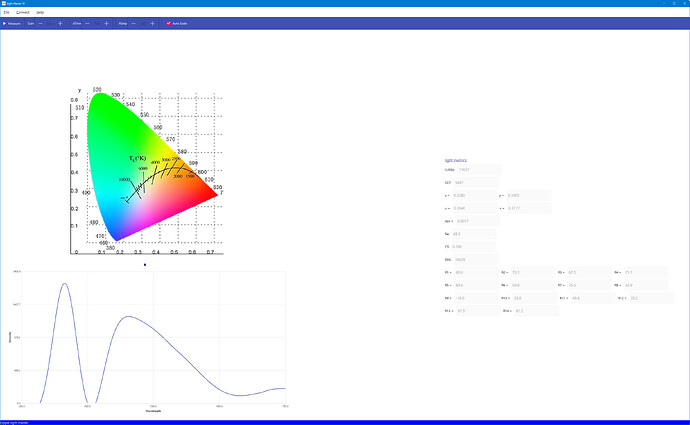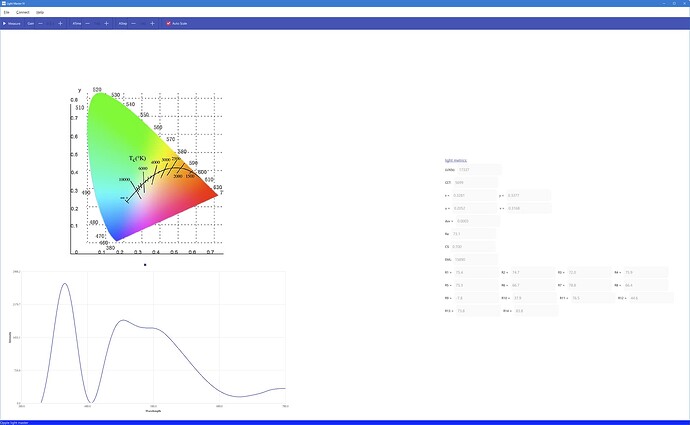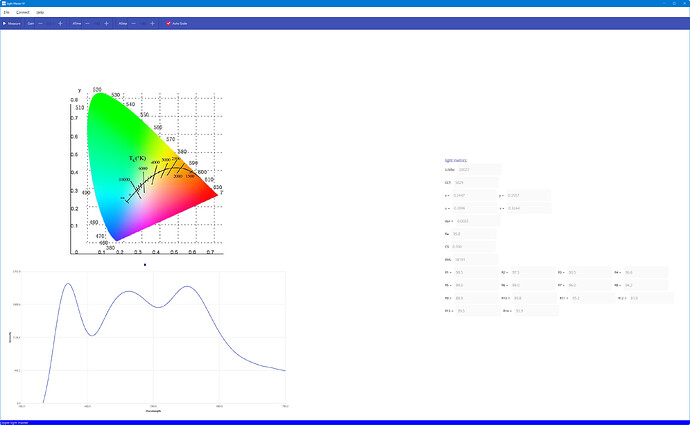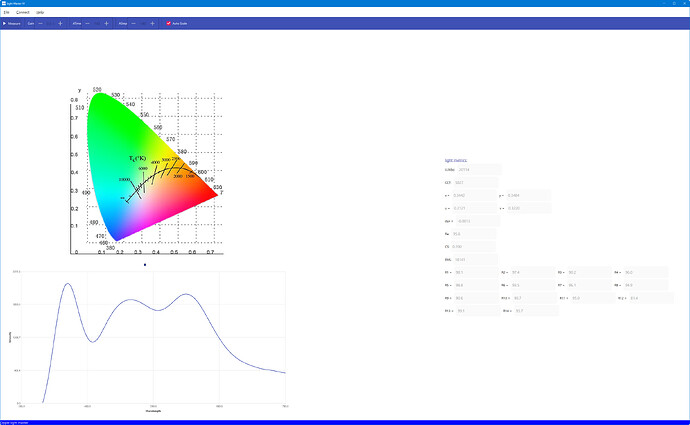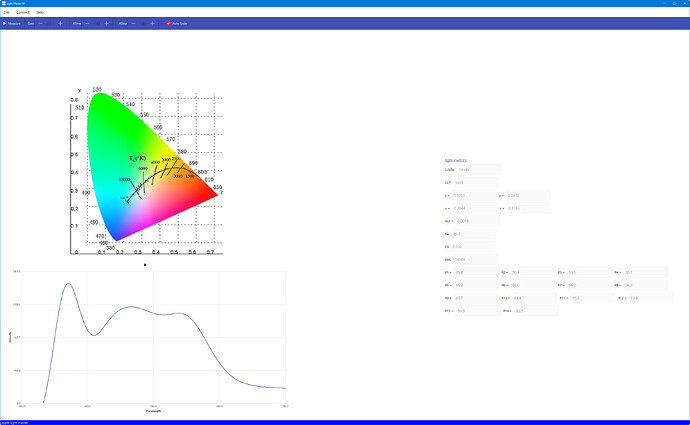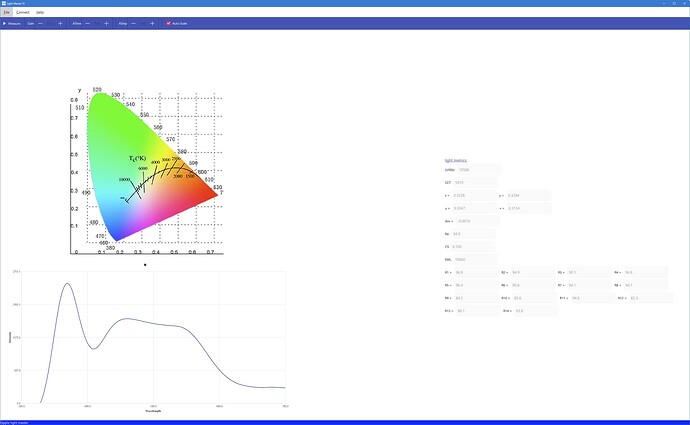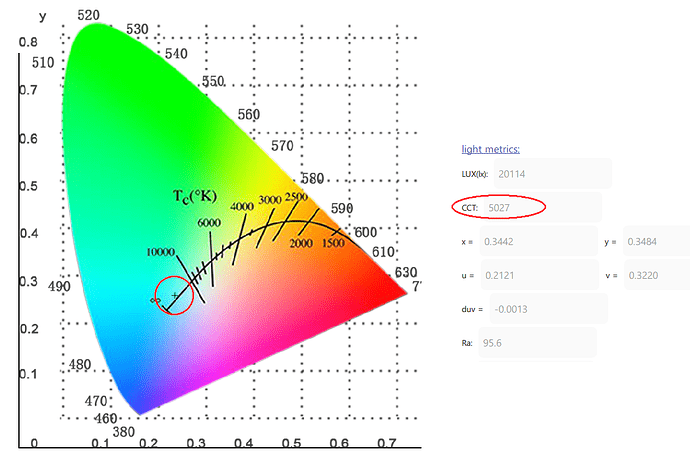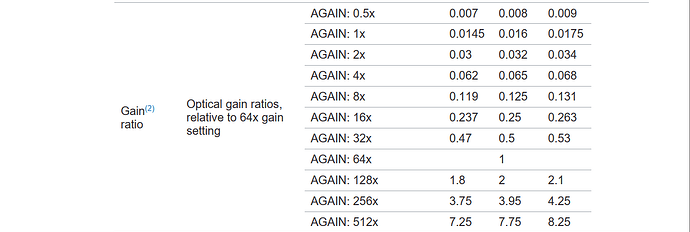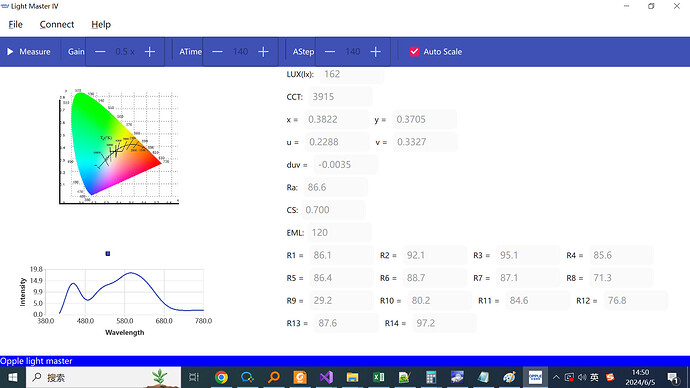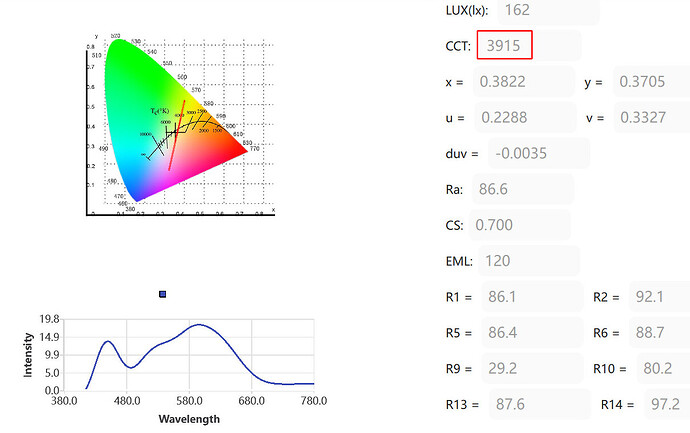I took some measurements with the lights I have at the moment.
Wurkkos COB, CCT: 5697, duv: 0.0017, Ra: 68.5, R9: -16.6
Nitecore TINI2, CCT: 5699, duv: 0.0003, Ra: 73.1, R9: -7.8
Emisar D1 mini Nichia B35AM 5000K (at output 4/7)
CCT: 5029, duv: 0.0022, Ra: 95.8, R9: 88.9
Emisar D1 mini Nichia B35AM 5000K (at output 7/7)
CCT: 5027, duv: -0.0013, Ra: 95.6, R9: 90.6
Wurkkos T10 LatticePower CSP2323 6000K (at output 4/7)
CCT: 5637, duv: 0.0018, Ra: 95.3, R9: 83.7
Wurkkos T10 LatticePower CSP2323 6000K (at output 7/7)
CCT: 5970, duv: -0.0016, Ra: 94.0, R9: 84.2
Here are all the measurements with my comments as footnotes.
Wurkkos COB
CCT: 5697
duv: 0.0017
Ra: 68.5
R9: -16.6 [1]
Nitecore TINI2
CCT: 5699
duv: 0.0003
Ra: 73.1
R9: -7.8 [1]
Emisar D1 mini Nichia B35AM 5000K (at output 4/7)
CCT: 5029
duv: 0.0022
Ra: 95.8
R9: 88.9 [2]
Emisar D1 mini Nichia B35AM 5000K (at output 7/7)
CCT: 5027
duv: -0.0013
Ra: 95.6
R9: 90.6 [2]
Wurkkos T10 LatticePower CSP2323 6000K (at output 4/7)
CCT: 5637
duv: 0.0018
Ra: 95.3
R9: 83.7 [3]
Wurkkos T10 LatticePower CSP2323 6000K (at output 7/7)
CCT: 5970
duv: -0.0016
Ra: 94.0
R9: 84.2 [3]
Comments on the measurements:
[1] High CCT, low R9 LEDs are now displayed at the reasonable ranges.
[2] The R9 for Nichia B35AM seems to be in the correct range. However, there is a hump around 640nm in the spectral density graph. I do not see such a hump in the Nichia’s spec sheet (see p.29) Edit: The density on p.29 is for 5000K R8000 which is not what is measured (my LED is 5000K R9080). I see the hump in p.30 (5700K R9080). Also the hump can be seen in the review by Zeroair although it is for 4500K R9080 LED. I guess the hump is typical for R9080 in the CCT range.
[3] For the LatticePower CSP2323 6000K, R9 seems to be high compared to koef3’s R9 measurement of 67. See here for koef3’s review on the same LED.
Other comments on the app:
[1] The crosshair mark on the chromaticity coordinate system is misplaced. My leds’ CCTs are around 5000K, but they are displayed as having CCTs over 10,000 on the displayed x, y coordinates. I am using a 4K monitor and changes in the layout due to screen resoultions could be causing this. I hope the layout can be improved in the next version.
[2] I hope there is a real-time measurement option. I was adjusting the distance from my LM4 to my lights so that the lux is around the same range. However, the LM4 only updates the numbers when I hit the “Measure” button in the app. Also, the measurement is very slow compared to the Android app. If calculating certain measurements takes time, I would recommend not displaying them, but displaying what you can in real time.
